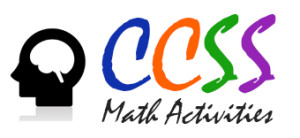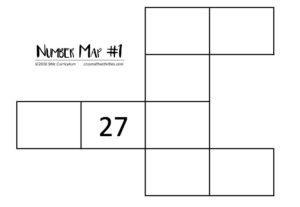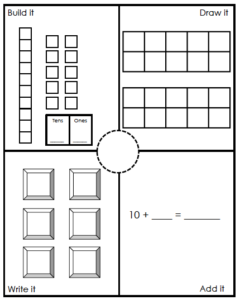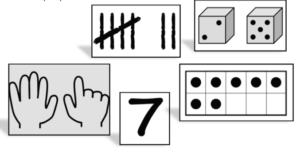Free printable? Yes, please! Introducing our DecaDeck card set for a variety of number sense activities!
In a classroom of 5- and 6-year-olds, how do you keep the interest of those who have highly developed number sense while still providing active learning opportunities for those that need a bit more practice?
Enter the DecaDeck! We created this set using five different models of 0 – 10. Ten frames, numbers, tallies, fingers, and dice. (Additional symbol cards for and are included, as well as a version with four different “backs,” so four colors of cardstock will create 16 unique decks.)
While the activity suggestions below can be associated with some kindergarten and first grade standards, we really like how well these align to the Standards for Mathematical Practice, particularly:
Math Practice 5 – Model with mathematics
Math Practice 7 – Look for and make use of structure

Download the DecaDeck here.
There are plenty of ways to use the DecaDeck at school or as a take-home activity. Here are a just a few ideas for partner games that we’ve used:
Go Fish
K.CC.4
The classic. Remove the symbol cards and all of one model (such as all the dice, or all the ten frames – if you don’t, there will be one leftover card for each number after pairs are made). Each partner gets five cards and the rest of the deck is face down between them. Students look for number pairs in their hand first, putting aside any pairs, then take turns asking their partner for a match. If the partner has a match, it must be handed over. If not, that student must “go fish” and take a card from the deck. When one partner is out of cards, count the pairs made. The student with the most pairs wins.
Go Fish to Tens
K.OA.4, 1.OA.6
Just like the classic pairs game above, but instead of matching numbers, students must find two cards that partner to ten (2 and 8, 0 and 10, etc). Please note, there will always be one lone “5” left over!
War
K.CC.6, K.CC.7
Remove the symbol cards. Deal out the entire deck evenly between two partners. At the same time, each partner turns over their top card. Whoever has the greater value wins both cards. If the values are the same, then there is a “war.” For the war, students place three additional cards facedown, and then turn up their next card. Whoever has the greater value that time wins all of the cards from the turn. The game is over when one student has all the cards or a set time is up (partner with the most cards wins). Extension ideas:
- Least value wins each time
- Turn over two cards each and find the sum or difference (teacher chooses)
- Require that students use the and cards when comparing values
Focused Fact Practice
K.OA.2, K.OA.5, 1.OA.6
This is done best with an adult partner. Place two cards face up on the desk and ask the student to say the addition sentence (you can use the symbol cards to help on this one, too). Let’s say a student gets a 5 and a 2. The student says “Five plus two equals seven.”

Now, the adult partner knows this student can add 2, but needs more practice with adding 5. So the adult partner places a new card over the 2, and this continues so that the student can practice adding 5 a few times in a row. Then when the adult partner feels the time is right, a different card can be placed over the 5 and a new number becomes the addition focus. Students who are ready could also practice adding 3 cards, or finding the difference between cards instead of the sum.
A Little Bit About Our Process
When we designed the cards, we had to make some decisions about the finger counting and dice models in order to keep the format as consistent as possible and allow students to make use of similar structures.
For the finger counting, we love the way EngageNY teaches this. They call it “the math way.” The theory here is that teaching kids to count beginning at the left pinkie and moving over to the right gives them constant access to a portable number line. (Think about it. Count to ten on your fingers the way you learned, right now. We’re guessing that when you got to 5, your thumb popped out to be in front of your “1” finger.) Also, we wanted the cards to match the ten-frame cards and tallies as much as possible, with the 5-groups easily identified.
When it comes to the dice, one of our favorite Kindergarten “hacks” is to take regular dice and cut a piece of white mailing label and stick it over the 6, instantly giving you dice that roll only a 0 to 5. Roll two, and you can’t go over 10! They are also a great substitute for number cards. (Side note: We found a pack of ten little containers at a dollar store and keep our dice in these. They don’t roll off the table, are quiet, and easily read through the plastic).
Do you have other ideas for using the DecaDeck? Share them with us so we can spread the word!




